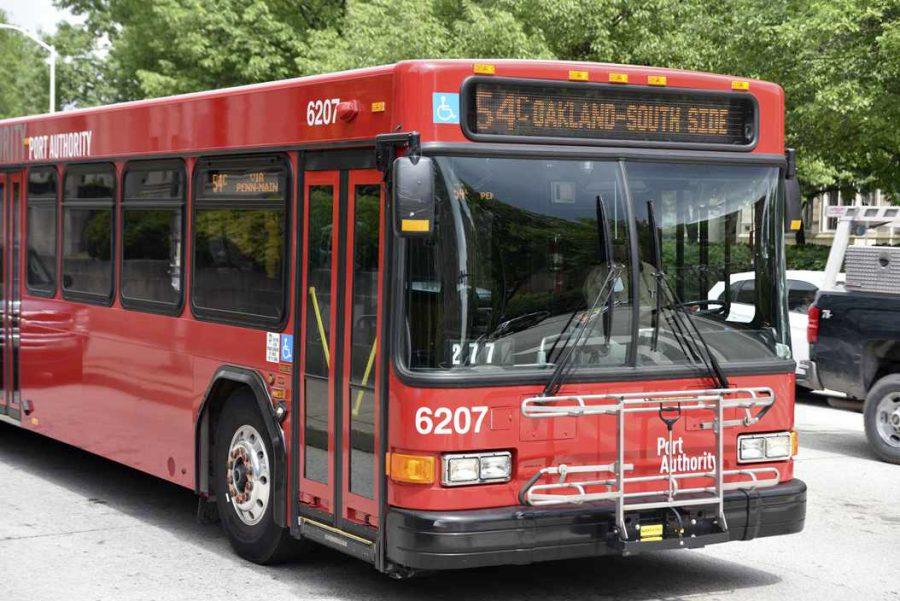Opinion | A review of Pitt transportation methods
August 6, 2022
If you are an incoming first-year student, you will soon learn that Pittsburgh is a city that has it all — at least climate-wise. Between grueling heat, precipitation including but not limited to rain, snow and hail, and violent winds that feel like a slap in the face on your way to class, in Pittsburgh you really get the best of all four seasons. Sometimes you must call on artificial ingenuity to protect you from the various climates and bring you to the location you need to go to — such as the 10A, Pittsburgh Regional Transit or Spin Scooters. As someone who grew up in a town where public transportation was not very prevalent and has now used much transportation during my two years at Pitt, here is my take on transportation at Pitt.
In case you have not fully explored Pitt, it is important to understand that campus extends up a hill. The street next to the UPMC Presbyterian Hospital which pivots at the Petersen Events Center is infamously referred to as Cardiac Hill because of the difficulty of climbing up the hill, as well as its proximity to the hospital. In addition to the weather elements of Pittsburgh, the rise in elevation makes it essential to understand transportation methods in Pittsburgh that can help you get to where you need to be safely and promptly.
First, the 10A shuttle is the easiest way to get around the actual campus of Pitt. Sometimes you can find its sister bus — the 10B — which runs a similar route. Both buses start from the Cathedral of Learning, then travel towards Bellefield, but the 10A passes the Pitt Housing on Bigelow while the 10B does not. They then both pass Sutherland Residence Hall, down Fifth Avenue and loop back on Forbes to the Cathedral of Learning again. Thanks to the Pitt shuttle tracker website, it is easy to figure out where the 10A is and when it will arrive at any location.
But I must provide a few warnings about the 10A. When it is icy or snowy — when a ride would be beneficial — the 10A often stops running. Also, after a cold and icy Pittsburgh winter, the following season arises — pothole season. This makes 10A rides more like a rollercoaster. I highly recommend sitting in the front of the bus to have the smoothest ride possible. In the winter, the buses can become quite crowded — so if you are relying on a ride, I would make sure to get to the stop early to catch a bus when needed.
After the 10A is done running, which is around 3:30 a.m., Pitt offers another shuttle called the “SafeRider,” which provides a safe ride home, as the name suggests. All you have to do is call the SafeRider, and the operator will inform the bus to stop at your location. Even though this service is free to Pitt students and can be very helpful, in my experience, sometimes the wait can be an hour or more on weekend nights. There is also a limited number of trips you can take — one round trip per night and 25 per semester.
Also, Pitt students have free trips on all Pittsburgh Regional Transit buses as well as the incline at Mount Washington. Generally, the buses run a few minutes late, so arriving at the bus stop at the scheduled time will ensure that you make the bus. From Oakland, it is easiest to access downtown or Shadyside using any 61 or 71 bus, but you can travel by bus to all areas and take the 28X to Pittsburgh International Airport.
Even though Google Maps is a good estimator and guide on what buses are coming, it is important to understand some general rules — coming from someone who has gotten lost on the bus system numerous times. On Fifth Avenue, buses travel against traffic, but this is not the case on every street. For me, the most challenging part of traveling via bus is figuring out which bus can get you back to campus. My best advice is simple — read the description on the front of the bus. If the bus’s sign reads a location “via Oakland,” it will take you back to campus.
Finally, while I do not have enough trust in my coordination to use this method, you can rent a Spin scooter or bike to travel around Pittsburgh. To use the scooters, all you have to do is download the app and then enter the number of the scooter you are renting. Unlike the other travel methods, this is not free to Pitt students. Using scooters as a primary method of transportation can become quite costly since it is one dollar to unlock plus about 50 cents per minute to ride.
The newly updated rental bikes — POGOH — are free for Pitt students to ride for up to 30 minutes, then are $3.50 for each additional thirty minutes. Although you can surely travel around Pittsburgh using a bike, due to the city’s many rolling hills it will not be a leisurely bike ride.
As I approach my third year on campus, I am learning more about the transportation system and getting more comfortable using it. This is not an exhaustive guide to transportation, but hopefully, this gives you a good place to start.
Talia Spillerman writes about anything and everything. Write to her at tns26@pitt.edu



